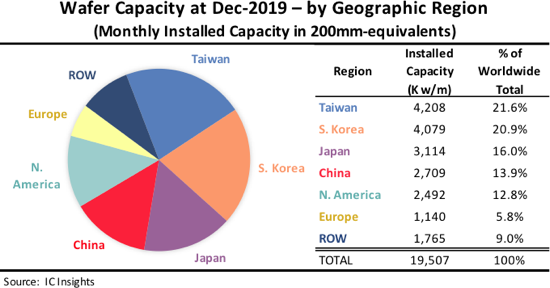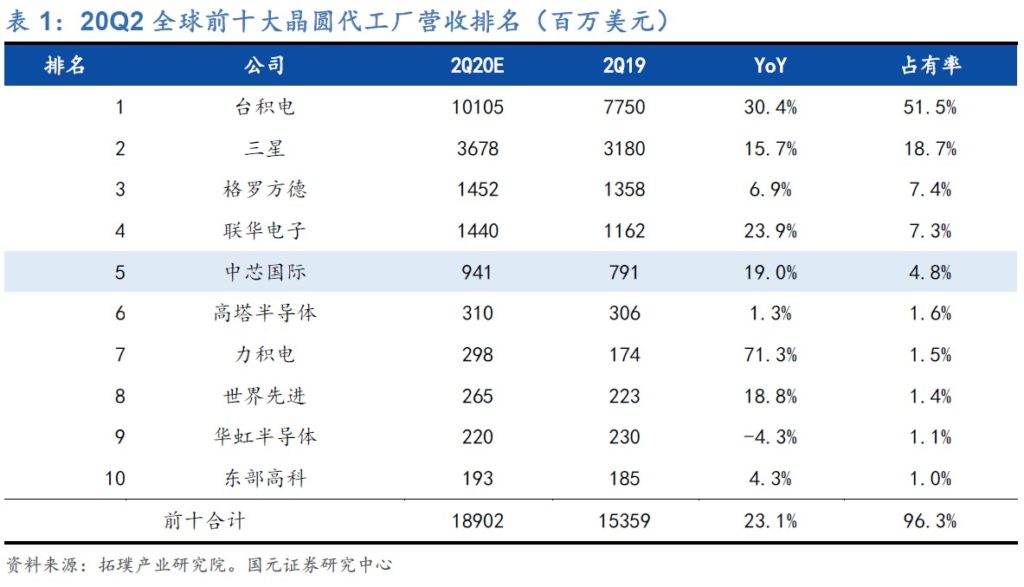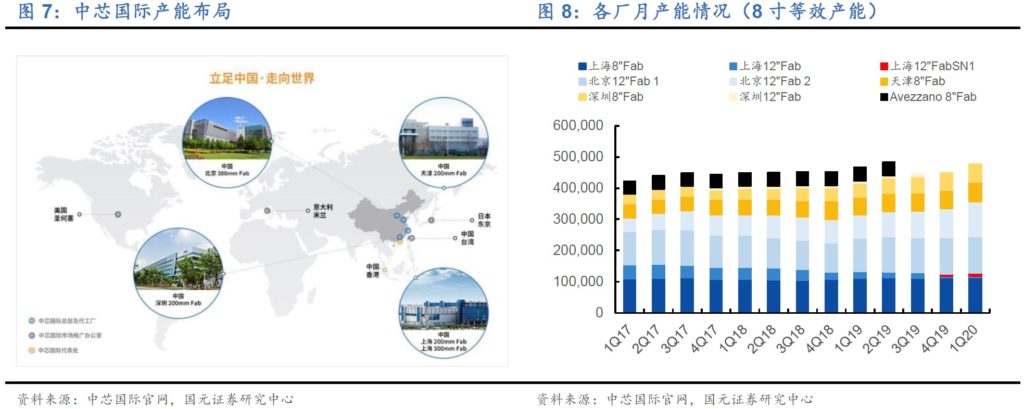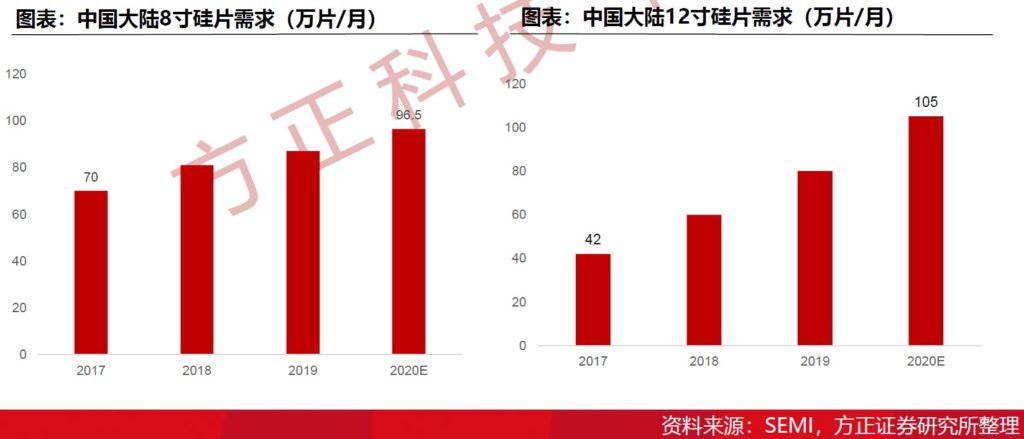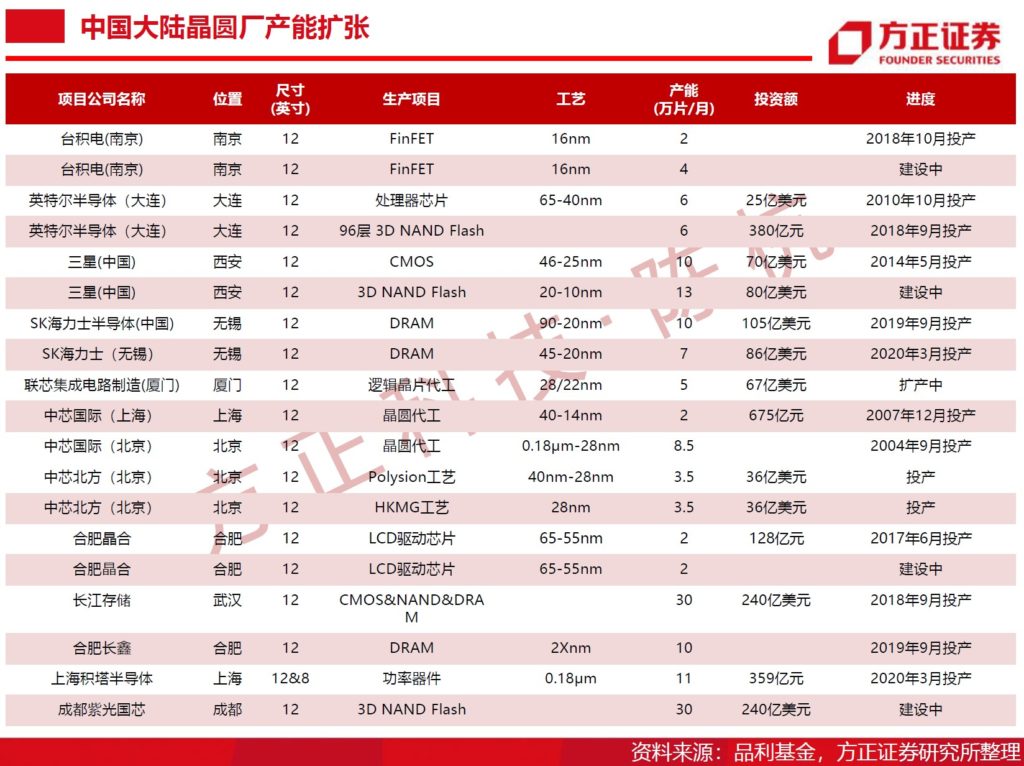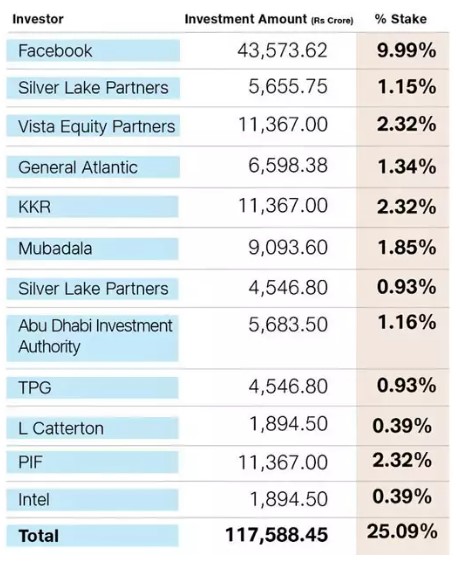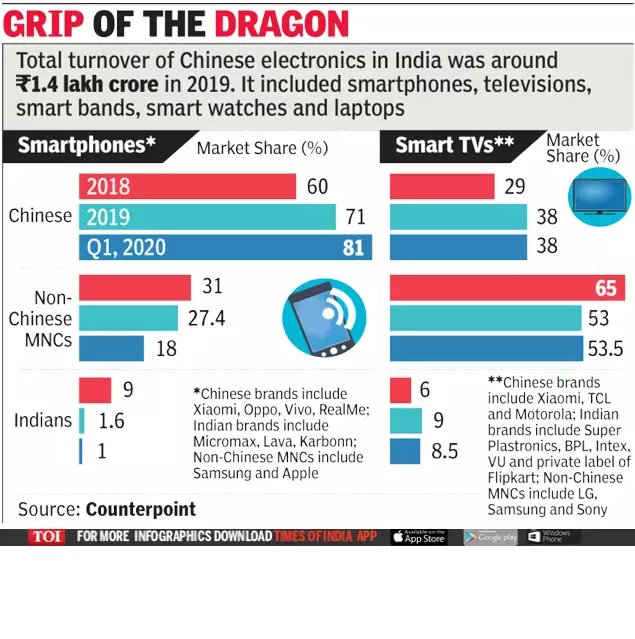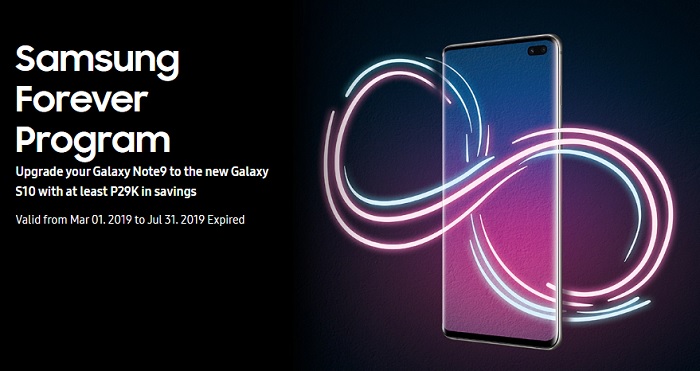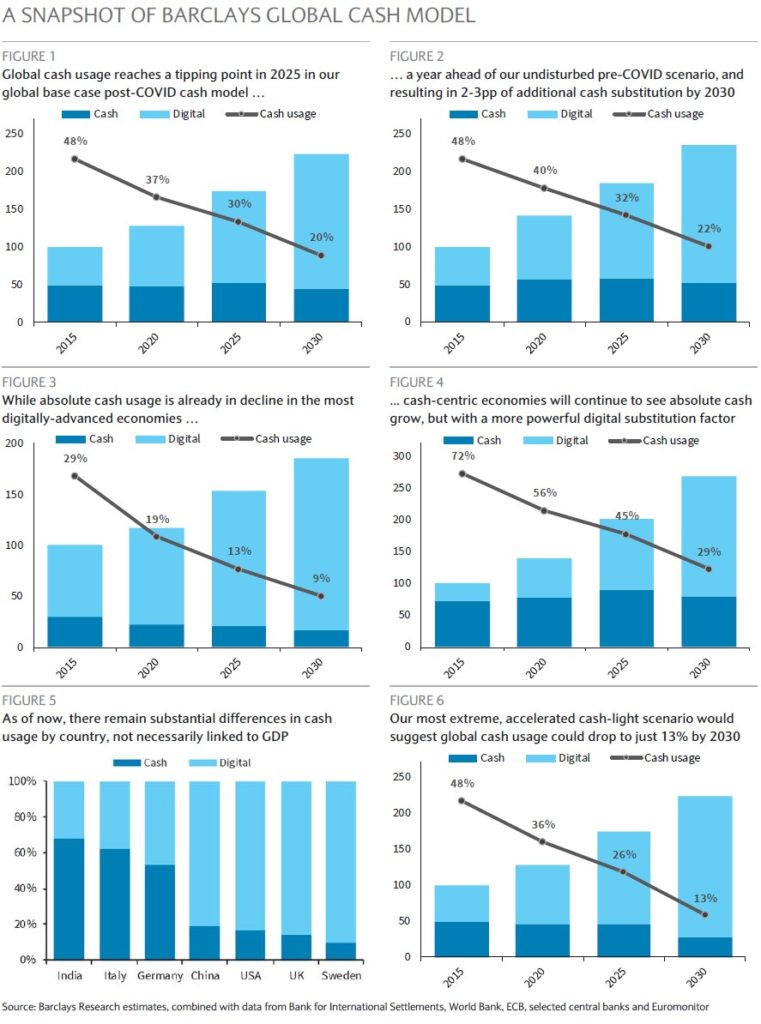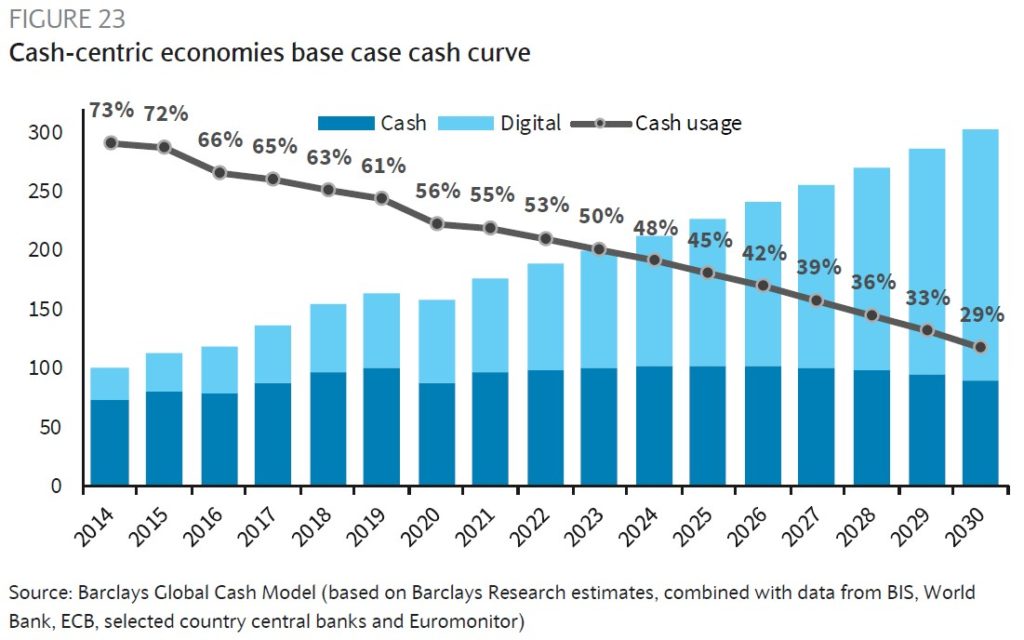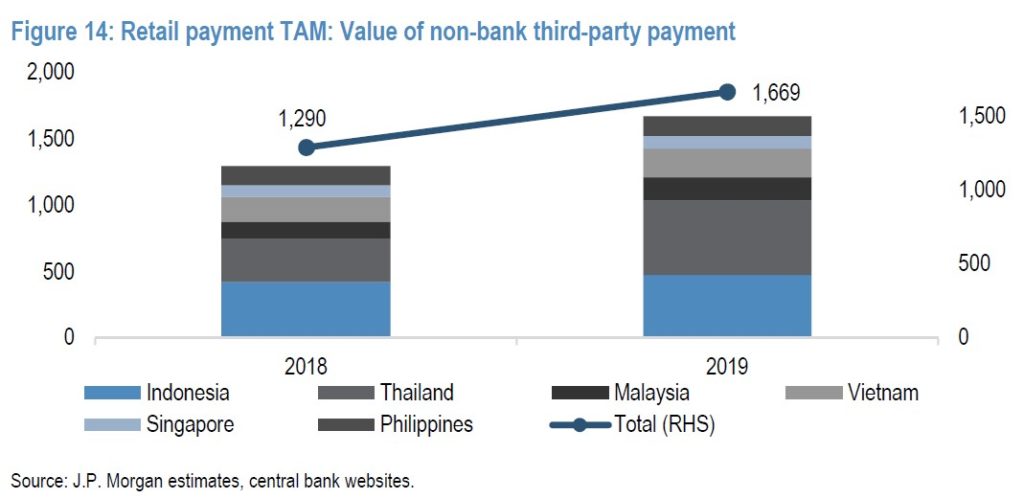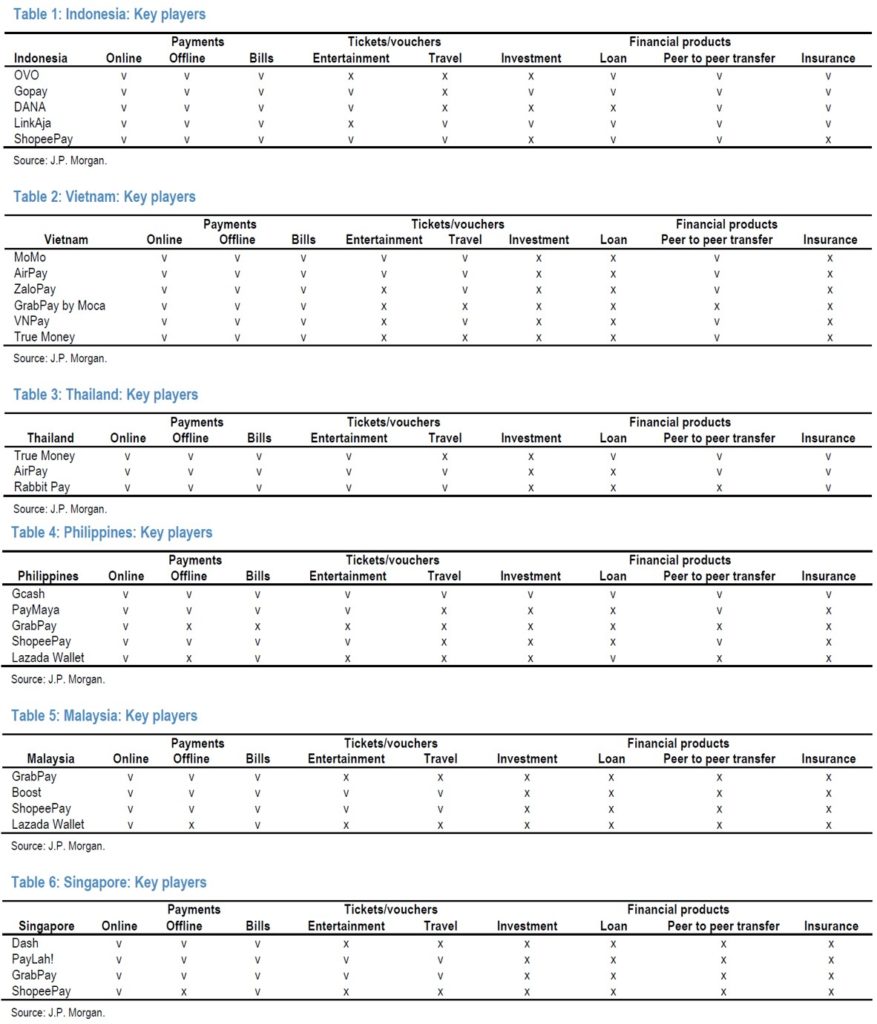7-4 #GlassHalfFull: Micron plans to shift its memory supplies from the smartphone market to the data center market; LG Chem reportedly plans to start producing batteries for Tesla vehicles at a domestic factory in 2020; OPPO and vivo have reportedly put a hold on all investments in India related to manufacturing; etc.
According to IC Insights, As of Dec 2019, Taiwan led the world in wafer capacity with about 22% of worldwide capacity installed in the country. China became a larger wafer capacity holder than Europe for the first time in 2010 and then surpassed North America in 2019. China held 14% of the world’s capacity at the end of 2019. China is expected to gain the most percentage points of capacity share over the 2019 to 2024 timeframe. (IC Insights, press, Laoyaoba)
According to TRI, SMIC in 2Q20 is expected to generate revenue of USD941M, ranking fifth in the world with a market share of 4.8%. In 2019, the company achieved sales revenue of USD3.116B, with a gross profit margin of 20.6%. In the long run, 5G, AIOT and other innovative applications drive market demand, the company’s advanced process capacity is gradually increased, and revenue and gross profit are expected to continue to improve. (Guoyuan Securities report)
SMIC has built factories in many places with sufficient production capacity. There is a 300mm fab and a 200mm fab in Shanghai, a 300mm fab and a holding 300mm advanced process fab in Beijing, and a 200mm fab in Tianjin and Shenzhen. Jiangyin has a holding 300mm bump processing joint venture plant, with 7 wafer plants (4 12” plants and 3 8” plants) that have been built and are under construction. In 1Q20, SMIC’s total converted 8” monthly production capacity is as high as 476,000 pieces. (Guoyuan Securities report)
According to Founder Securities, from 2017 to 2019, sales of semiconductor wafers in Mainland China rose from USD680M to USD1.21B, with an average annual compound growth rate of 40.88%, much higher than the global compound annual growth rate of semiconductor wafers during the same period 25.65%. After 2020, the proportion of domestic 12” fabs will exceed 8” fabs, and the corresponding demand for silicon wafers will also exceed the demand for 8” wafers. Domestic wafer fabs are mainly 8” lines before 2020. It is estimated that by 2020, domestic demand for 8” silicon wafers will be close to 1M pieces/month. (Founder Securities report)
TF Securities analyst Ming-chi Kuo has pointed out that Largan will begin shipping high-end lens for Apple iPhone 12 from mid-Jul 2020. He has pointed out that Largan’s shipment of 2H20’s new iPhone high-end lenses is delayed by 4-6 weeks compared to the past, so the peak of 2H20 Apple lens shipments will be Sept-Nov (from Aug-Oct). Largan’s high unit price 8P lens shipments continue to grow in 2H20, and shipments are expected to reach 1M in 2020. Largan is the only vendor that can produce 8P lens, the unit price of the 8P lens is about UD5–5.5, which is significantly higher than the USD1.8-2.4 of 7P. (Laoyaoba, TF Securities)
Micron has said it expects consumer demand for smartphones and other consumer electronics to fall below its initial expectations in 2H20, but data center demand is strong enough that supply shortages are emerging. The company has said it plans to shift its supplies from the smart phone market to the data center market, for both DRAM and flash memory chips. (Laoyaoba, Market Watch, Reuters)
According to TrendForce, despite the reduced demand for consumer electronics and smartphones as a result of the COVID-19 pandemic, the NAND Flash market showed a short supply in 1H20, thanks to the corresponding rising demand for cloud services and distance education, as well as increased inventory procurement by some clients concerned with a possible breakage in the supply chain. On the whole, SSD currently dominates NAND Flash demand, while demand from the eMMC, UFS, and wafer markets, which are related to smartphones and consumer electronics, remains relatively sluggish. (TrendForce, TrendForce)
LG Chem reportedly plans to start producing batteries for Tesla vehicles at a domestic factory in 2020 after the U.S. electric carmaker raised orders to cope with demand. LG Chem is converting some of its production in South Korea to produce batteries for Tesla. An LG Chem factory in Nanjing, China, already makes batteries for Tesla. (Reuters, Laoyaoba, Teslarati)
Intel Capital, the investment arm of global tech and semiconductor major Intel corporation, will pick up 0.39% equity stake in Reliance Industries’ Jio Platforms for INR1,894.50 crore (USD253.55M). Intel Capital is the 12th investor to buy a stake in Jio Platforms, which has raised more than USD15.5B by selling a 25% stake since Apr 2020. (Laoyaoba, TechCrunch, Money Control, India Times)
OPPO and vivo have reportedly put a hold on all investments in India related to manufacturing, given the current geopolitical situation. Both smartphone manufacturers have yet to register for India’s production-linked incentive (PLI) scheme. vivo has been panning an investment of INR7,500 crores (roughly USD1B) to set up a local manufacturing plant, which is the largest investment from any OEM in the region. OPPO is also planning on setting up an Electronic Manufacturing Cluster (EMC) in Greater Noida, with a total investment of INR3,500 crores (roughly USD500M). (Gizmo China, Economic Times)
Even as anti-Chinese sentiment gathers steam across the country, the hold of the dragon on the Indian electronics market remains strong. Chinese companies registered sales of nearly INR1.4 lakh crore in the Indian electronics market in 2019 as they dominated the fast-growing categories of smartphones, televisions, laptops, and even smart bands and watches. While Chinese brands such as Xiaomi, OPPO, vivo and realme strengthened, the homegrown Indian brands finished 2019 with only 1.6% share, which further dipped to under 1% in 1Q20. (TVJ, Economic Times)
Samsung has announced two offers to make it more attractive for India consumers to own Samsung’s premium Galaxy smartphones. Galaxy Assured is Samsung’s buyback scheme for premium smartphones, while Galaxy Forever aims to provide affordability options to consumers looking to own Samsung’s premium range of smartphones in India. (CN Beta, Samsung)
Samsung has trademarked ‘Antimicrobial Coating’. Antimicrobial coating is used to fight again virus strains or particles and bacteria on a given surface as well. The description of the patent is: “Protective cases and covers for smartphones and tablet computers”. (Gizmo China, Android Headlines, LetsGoDigital, ZOL, IT Home)
Motorola One Fusion is announced in Chile – 6.5” 720×1600 HD+ v-notch, Qualcomm Snapdragon 710, rear quad 48MP-8MP ultrawide-5MP macro-2MP depth + front 8MP, 4+64GB, Android 10.0, rear fingerprint scanner, 5000mAh 10W, CLP199,990 (USD250). (Android Authority, GSM Arena, XDA-Developers, Motorola)
Barclays’ base case modelling suggests that a global tipping point will be reached in 2025, at which point they estimate cash usage will have fallen to ~30% of value, from ~50% in 2014. By 2030, they anticipate share declining to just 20%, and some 2-3pp lower than had COVID-19 not happened. In their most accelerated cash-light scenario, in which they apply a modest 20% premium to their annual country-specific digitalization factors, cash usage falls to just 13% by the end of the decade. (Barclays report)
Going forward, following a COVID-19 related dip, Barclays expect cash to continue to increase on an absolute basis until the middle of the decade (2026) to an index level of 102, which represents only a modest increase from 2019 onwards. Cash would represent at this time only ~42% of total spend. After that, they expect cash to decline on an absolute and relative basis to ~29% of total spend in 2030 – roughly the level of digital markets 5 years ago. (Barclays report)
In the ASEAN six countries (Indonesia, Thailand, Singapore, Malaysia, the Philippines, and Vietnam), JP Morgan calculates the total addressable market (TAM) for online payment companies could theoretically be >USD1.5T (by TPV). In their TAM calculation, they include cash payments, payments by cards and retail transfers. Up to 70-80% of retail transactions can be settled in cash in ASEAN countries. Hence, online payment can see significant growth from cash. (JP Morgan report)
JP Morgan consolidates the key players of fintech in ASEAN six countries and their corresponding segments. (JP Morgan report)

